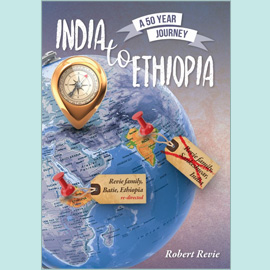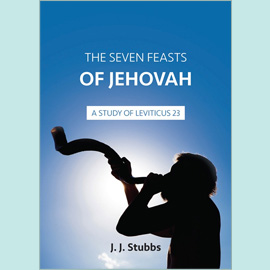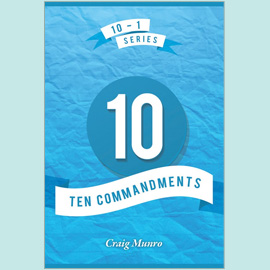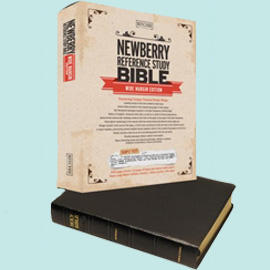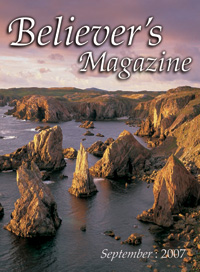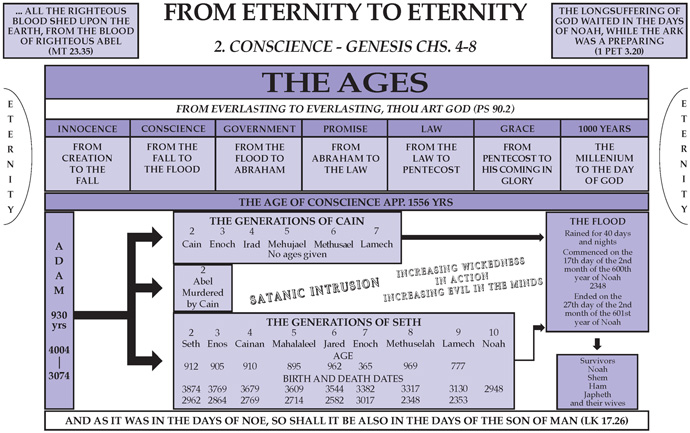
CONSCIENCE (Gen 4.1-8.22)
Man, having been expelled from the Garden of Eden, has now to live by his own conscience. At this time there was no Scripture, and no law had been given. There was no system of human government in place, and we conclude that man was to be guided by his conscience and by what Adam and Eve passed down through their sons. Conscience should have taught them what was right and wrong. From the beginning we see that the human line divided into two distinct groups, one descended from the first man born, Cain, and the other from the third man born, Seth.
The Commencement of the Age - Cain and Abel
Anticipation
At Cain’s birth Eve anticipated that the man-child was the answer to the promise of Genesis 3.15. Her statement at his birth, "I have gotten a man from the Lord" (4.1), reveals that this was what was in her heart. It was not to be. Right at the beginning we learn that the one born first is not necessarily the one who will be obedient to the Lord.
Agreement
From their parents the two sons had learned the way of approach to God and the necessity of availing themselves of this privilege, and undertaking this responsibility.
Antagonism
The two offerings are fundamentally different (see Heb 11.4). Cain brought of the fruit of the ground and did not come in faith. Abel brought of the firstlings of the flock and came by faith.
In the heart of the offerers was where the difference lay, and their offerings revealed this difference which otherwise might have been hidden. The first dispute between men was on the question of "religion against faith". We learn from this that religion brings to God the work of man’s hands, is not based on faith, and is prone to violence. We also note that the timidity of Adam when the Lord spoke to him (3.8-10) is now replaced in Cain with outward, lying, arrogant defiance.
The Characteristics of the Age
The division of lives
The vital points were when each of the sons was born and when they died. The first point, when their son Seth was born, was vital in that this is the seed of which Messiah came. The link right back to Adam is noted here as it is by Luke.
The reign of death
The oft-repeated remark, "and he died", proves that the judgment brought in by the Fall continued throughout all mankind. Death was now reigning. The long years of these men should be seen as necessary for the population of the earth to increase. It also ensured that the account of what took place at the beginning could be passed down to other generations. When Noah was born, seven previous generations were still alive, although Enoch had been translated. Adam died about 125 years before Noah’s birth.
The differences between the line of Cain and the line of Seth
There is no mention of ages in the line of Cain. God numbers and values the years of His own. There is significance also in the fact that the ages of history are measured by the lives of men. Man is seen to be the key, vital part of the calendar.
The line of Cain settled on earth and tried to make it a place that was pleasant to live in. Nothing is said of the occupation of the other line. This is not of interest in the godly men noted of the line of Seth.
Note how ambition expressed itself in the line of Cain. Cities were built; agriculture, industry and the arts were prominent; conflict was glorified; polygamy was first introduced. The seventh from Adam through Cain married two wives. This is disobedience to 2.24 where Adam is instructed to cleave to his wife. What a contrast to Enoch, the seventh from Adam through Seth.
The Characters in the Age
Note the meanings of the names in the line of Seth and their significance.
Seth (Appointed). To take the place of Abel.
Enos (Frail mortal man). Realising what they were.
Cainan (Acquisition). Acquiring God’s blessing which comes in realising the truth signified by the name "Enos".
Mahalaleel (God is splendour).
Jared (Descending). Humility.
Enoch (Tuition). Learning in the school of God.
Methuselah (It will be sent). God’s long suffering.
Lamech (Powerful). Overcoming in these days.
Noah (Rest).
Thus there is movement from the new beginning of Seth to the judgment of the Flood and the subsequent new world of Noah.
One special character
Enoch is marked out. The seventh from Adam through Seth shows the climax of godliness. The seventh from Adam through Cain (Lamech), as we have observed, is the climax of godlessness.
Enoch - what he did
A man who walks with God is looking for coming glory, and gives the first prophesy from human lips.
Enoch - the significance of his life
The Climax of the Age
There was intermarriage between the sons of God and the daughters of men. This was a satanic attempt to prevent the seed of the woman, who would bruise the head of the serpent, being born.
The heart was only evil continually. There was no room in their hearts for anything but evil. There was no time in their lives for anything but continual evil. Wickedness was great (6.5). The earth was corrupt (6.11). It was ruined and being destroyed. The earth was filled with violence and there was no escape from it (6.11,12). There were giants in the land, men of renown, "heroes" who would set themselves up as leaders.
The condition of Noah
He found grace in the eyes of the Lord. The first mention of grace in the Bible (6.8) is when sin was at its worst. Noah knew the grace of God before the judgment came. Why did he find grace? He was just and upright; he walked habitually with God; he was a man of faith (Heb 11.7).
The conduct of Noah
The preacher. 2 Peter 2.5 tell us that he was a preacher of righteousness. He was the solitary witness to the righteous demands of the Lord. He was a living sermon, because he was working as he was preaching.
The father. He brought up three sons who respected him in a godless world.
The builder. God told him that the flood would come, but not when. He was warned of God (Heb 11.7). No such event had ever been before. The ark was huge (approx. 140m long x 23m broad x 14m high). It had three stories, and was pitched outside and inside.
The heir. He was an heir of the righteousness which is by faith (Heb 11.7). The link between righteousness and faith goes back beyond Abraham. Noah, like Abraham, was counted righteous because of his faith.
The Cataclysm at the end of the Age
The fountains of the deep were opened. The ocean floors lifted and huge underground reservoirs of water were released upwards. In addition to this the vapour cloud which surrounded the earth collapsed and that huge expanse of water fell to earth.
The timetable in Noah’s life
17.02.600 Flood begins.
26.03.600 Cataclysm begins.
17.07.600 Ark rests.
01.10.600 Hill tops visible.
10.11.600 Raven sent.
17.11.600 Flight of first dove.
24.11.600 Flight of second dove.
01.12.600 Flight of third dove.
01.01.601 Covering removed.
27.02.601 Disembarkation from the Ark.
Dispensational lessons
Enoch is a picture of the saints who are Raptured before the Tribulation, and Noah is a picture of the saints who go through the Tribulation. It is stated of both these men that they walked with God (5.22,24; 6.9).
Typical lessons
The Flood is a picture of baptism (1 Pet 3.21). Baptism does not save. Noah was saved before the Ark was built or the waters came. He found grace in the eyes of the Lord before the world was overwhelmed. The Flood is, however, a picture of baptism in that it heralded the end of the old world by judgment and the beginning of the new.
Practical lessons
The preservation of Noah and his family is an encouragement that "The Lord knoweth how to deliver the godly out of temptations", and gives us confidence that He will "reserve the unjust unto the day of judgment to be punished" (2 Pet 2.5,9).
